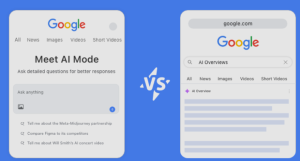NVIDIA Get3D is set to disrupt many startups
On August 20, 2011, Marc Andreessen of a16z published a pivotal article in The Wall Street Journal titled “Why Software is Eating the World.” Today, September 27, 2022, I am publishing “Why AI is Eating the Creator Economy of Web3.”
You see, it all stems from the advancements in machines and deep learning, which have exploded with DALL-E, MidJourney, Stable Diffusion, and most recently, NVIDIA's announcement of GET3D.
NVIDIA's new GET3D AI tool will disrupt many recent startups that have developed tools and applications for scanning objects to populate the metaverse.
“NVIDIA GET3D can generate 3D shapes with high-fidelity textures and complex geometric details, trained only with 2D images. These 3D objects are created in the same format used by popular graphic software applications, allowing users to immediately import their shapes into 3D renderers and game engines for further editing.”
NVIDIA states that inputting about one million images into GET3D using an A100 Tensor Core GPU took only two days (a speed and scale that dwarfs other tools aimed at manually scanning everyday objects).
Its ability to instantly generate textured 3D shapes could be a game-changer for developers, helping them quickly populate virtual worlds with a variety of exciting objects.
With the help of another NVIDIA AI tool, StyleGAN-NADA, it can also apply various styles to objects based on text prompts, so it is entirely possible to easily rough out a tofu building or create a high-precision, majestic building covered in dirt.
More importantly, these images will undoubtedly eventually become USD (Universal Scene Description) file formats, which NVIDIA and other companies are promoting as one of the interoperable standards for objects.
This means that the promise of a democratized creator economy, where people can make money by uploading their own pictures to sell on websites like Sketchfab, has essentially become a thing of the past.
Take Quixel, for example; their massive image library could be absorbed and immediately become an obsolete business.
Between MidJourney, DALL-E, and now Stable Diffusion, it won't be long before we can input a text prompt and AI will generate a metaverse from it.
Fully realized 3D and immersive environments are not far off, and I would bet that in less than two years, we will have a plugin for Unity or Unreal Engine that can procedurally generate virtual worlds that we can move and interact with through a phrase or a few words.
There are already some tools that can shorten the design process, but the last step of this process is simply telling the AI what you want the result to be, without any further involvement.
Then it will be up to the user to adjust the shape or leave it as is. We have already seen signs of “prompt engineers,” who understand how to manipulate the desired prompt phrases to get the best initial results, and they will emerge and command decent prices (at least in the short term).
But they are not real creators, and AI will leave these people behind as it dominates the industry.
Fabian Stelzer created a set of sci-fi short films that were 100% produced with these tools and community-driven narratives, which is very exciting to see how AI can democratize creativity, but at the same time, it also eliminates a large number of traditional creators (who usually have to be involved in these projects).
“The experience of being able to quickly prompt a trailer while discovering this world on your own is incredibly exciting, and it's a glimpse into the future.”
As these tools are fed more real-world data for training, this only increases the likelihood of this happening faster.
However, there is already a counterattack.
In a polarizing move, Getty (a visual media group and popular supplier of images and editorial photography) announced this week that it will ban AI art, citing copyright issues.
“There are real concerns about copyright issues with the output of these models, as well as the rights of the individuals depicted in the images, the metaverse, and the images themselves.”
“For the benefit of our customers, we are taking proactive action.”
Getty is a massive image library used by media companies around the world. It contains images and raw photos that users can use to illustrate their articles, but a licensing fee is required.
Getty announced that it will strengthen the regulation of images made with AI on its platform, stating that any images made with programs such as Stable Diffusion, DALL-E, and Midjourney will be banned.
As a result, a split has now occurred – a war between creators and those who use AI for creation. And this will result in casualties throughout the industry.
Software may be eating the world, but AI has the opportunity to quickly eat the creator economy even before software has a chance to eat the world.







